This post may contain affiliate links. If you use these links to buy something we may earn a commission. Thanks.
A spot with shade opens the door to various zone 4 ground covers that will thrive in the space. You’ve got options from low-growing, fast-growing, low-maintenance, or evergreen, and all are beautiful when grown in shade.
Not only will these zone 4 ground covers thrive with less light, but offer multi-functional uses for you, your ecosystem, and of course, the neighbors’ eyes.
You’ll also have access to 25 additional shade-loving ground covers that are hardy to zone 3.
See: Best Zone 3 Ground Covers for Shaded Areas (With Pics)
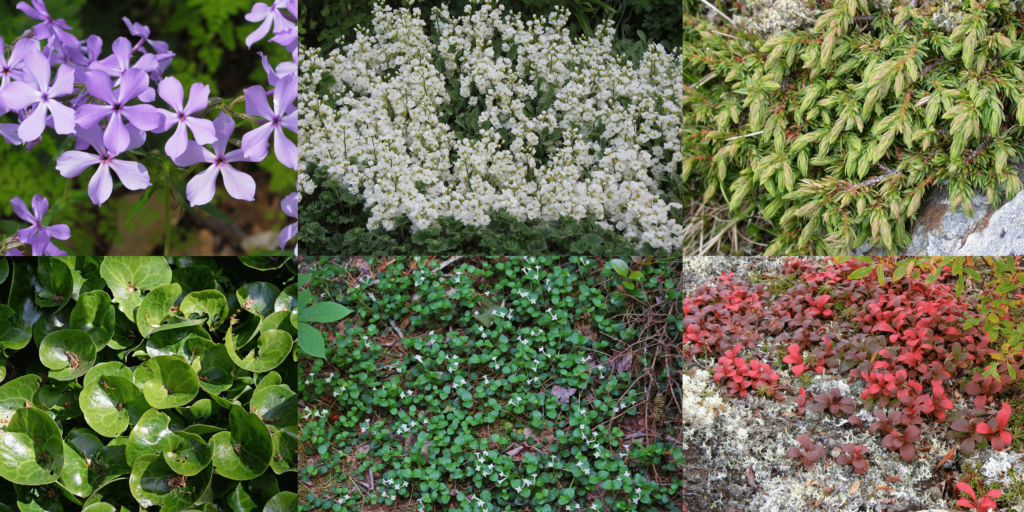
The key to a functioning and thriving garden is understanding a plant’s needs and placing it in a suitable environment. The amount of sunlight is a large factor when selecting the right plants, and if you have a lack of sun, you’ll need to know which plants are best for shade or it’ll seem like nothing grows for you.
If you’re struggling to fill a shady space with something that has yet to thrive, it’s likely a selection issue.
This list of shade-loving ground covers includes options that require specific conditions! Not every plant on this list is ideal for the same soil type or watering schedule.
To plant the best ones for your area, determine what conditions are naturally provided, plus how hands-on or off you’d like to be, and choose a mix of the most appropriate plants that have compatible needs.
Before planting any of these options check with your local invasive plant council or regional extension office for guidance on plants that may be invasive in your area.
By the way—Mushrooms also thrive in shade! Gourmet mushrooms grown from your woodchip mulch are deliciously edible. The wood chips offer gorgeous ground coverage and leave behind rich compost for your plants.
See: 6 Best Mushrooms for Woodchip Beds
Best ground cover shade zone 4
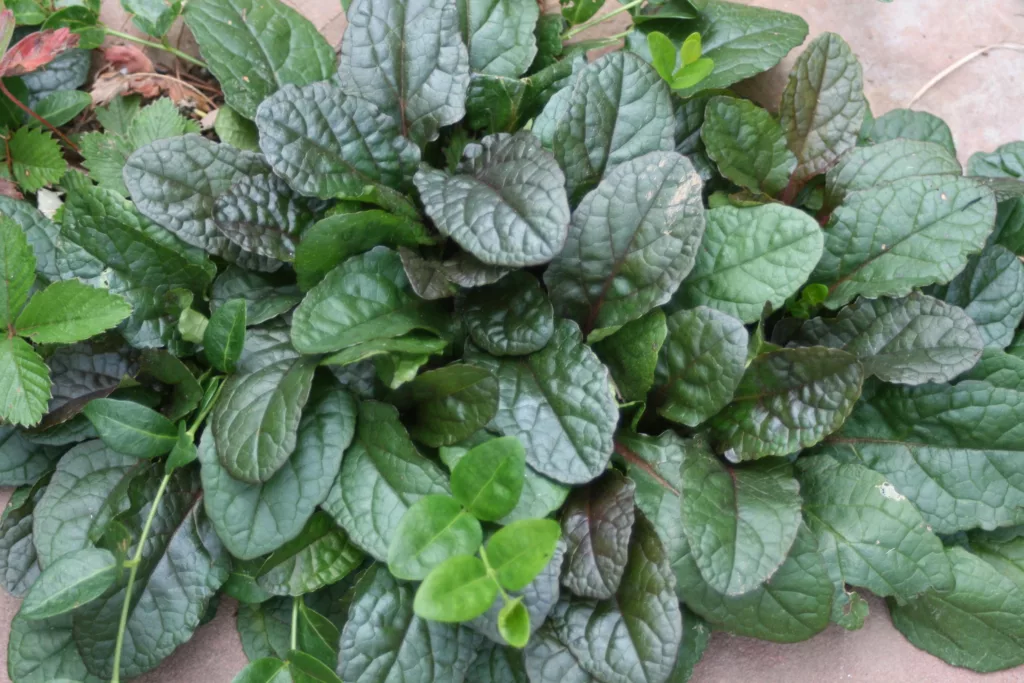
It takes actual gardeners to reveal what the best shade-growing ground covers, and as someone who has also lived in zone 4, I agree with these top choices! Each plant fulfills different desires from the gardener making them each the best in their own way.
Bugleweed, white Dutch clover, juniper, creeping charlie, violets, creeping jenny, and yarrow are the best shade-loving ground covers for zone 4. Thirty gardeners mentioned these as their favorite ground covers for shade along with multiple reasons.
Here’s what makes them popular:
- Bugleweed
Bugleweed is a top favorite because it’s so easy. The “chocolate chip” variety was specifically mentioned to be resilient against competition and offer pretty purple flowers in spring and summer. Bugleweed likes shade, sun, and any soil type. Bugleweed is hardy to zone 3, so everyone in zone 4 will have no trouble keeping it alive year after year.
- White Dutch clover
A classic lawn replacement is white Dutch clover because it grows low to the ground and comes back more full and consistent for those in zone 4. Plus, dogs don’t kill it like they do grass!
- Low growing juniper
Evergreen and easy to look after. The best part is deer resistance and drought tolerance.
- Creeping charlie
While controversial, it doesn’t require any effort at all. It’s low maintenance. It smells herbal and minty. It produces little purple flowers for the pollinators. It’s hardy.
- Violets
Cute leaves and purple flowers grow low to the ground and carpets into a lush rug after 2 years of establishment.
- Creeping Jenny
A vibrant and cute-looking ground cover that spreads with dense coverage.
- Yarrow
A very nutrient-rich chop and drop green manure ground cover for nearby perennials with a fragrant healing type of smell. They have dark and wispy foliage and fine white flowers.
While these choices are working seamlessly for this small set of zone 4 growers, plenty other useful and beautiful options are available.
All these ground covers are best purchased from local growers and neighbors. The second best options are your local nursery and small online shops. I often order unique plants and seeds from Etsy sellers but if you want an actual full-grown plant, Nature Hills Nursery is a go-to for online orders.
Here are all the best ground covers hardy to zone 4:
Strawberry (Fragaria)
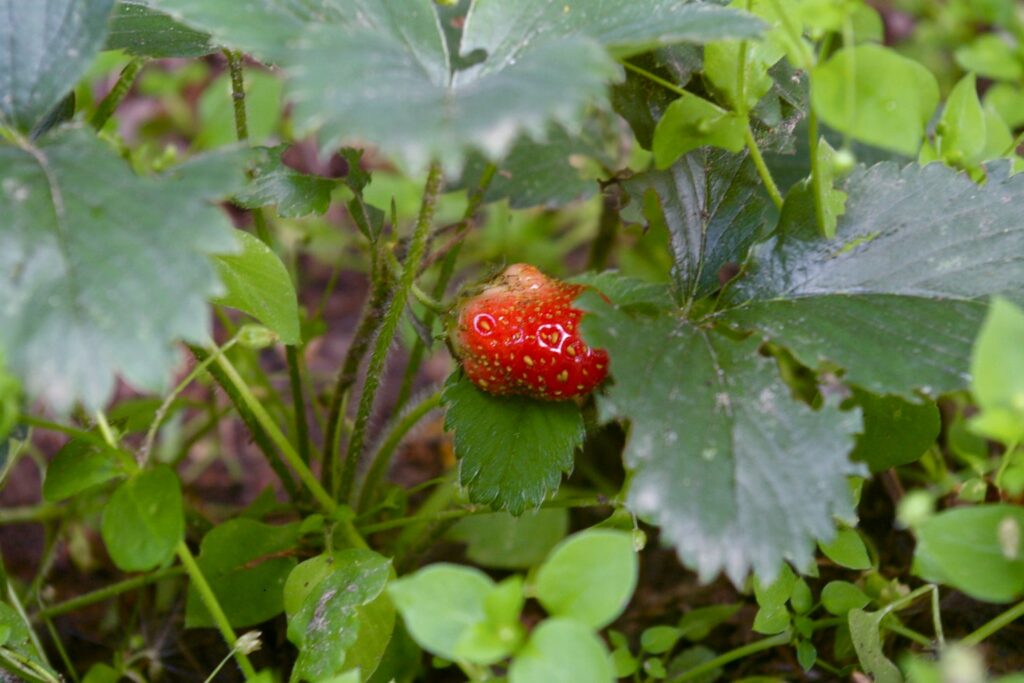
Strawberries are a popular ground cover for food forests (even in the shade)! While they put out less fruit, strawberry plants thrive in shaded spots. Rake leaves onto strawberry plants in autumn to protect them from winter winds.
- Height: 6-12 inches
- Range: North and South America, Europe, and Asia
- Climate: Zones 4-9
- Functions: Ornamental and edible. Sweet fruit and familiar foliage.
- Light requirements: Full shade to partial shade.
- Soil preferences: Moist soil.
Allow them to spread on their own into a carpet, and eventually, you’ll still get fruit with minimal light.
The best part of growing strawberries this way, is you’ll need to run your fingers through the leaves to reveal the hidden fruit—hidden fruit is not easily found by wildlife such as hungry birds!
Strawberries are offered for pickup at local nurseries or for delivery from an online order at Nature Hills Nursery. If they are currently sold out, Etsy sellers offer a variety of unique strawberries!
Related: 42 Best Fruits to Grow in Shade (for Good Harvests)
Yarrow (Achillea millefolium)
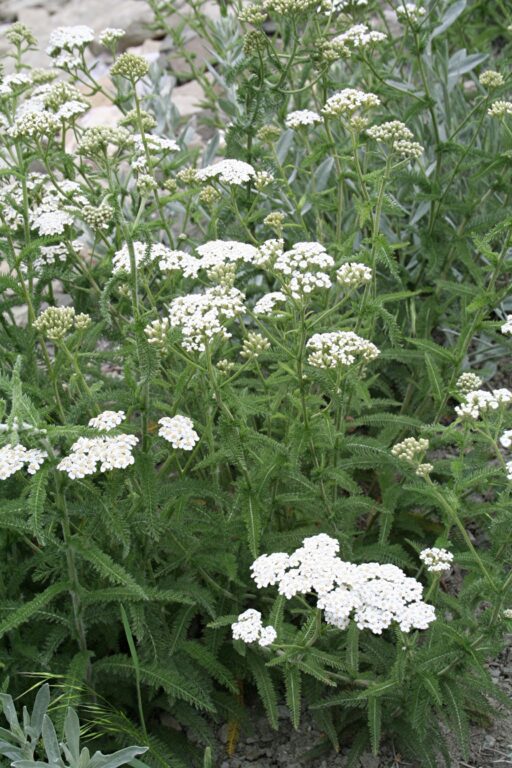
Yarrow is often chosen as a ground cover to provide medicinal value and green manure in shady or sunny spots. This plant is considered an “accumulator.”
- Height: 1-2 feet
- Range: Europe and Asia
- Climate: Zones 4-8
- Functions: Ornamental, medicinal, and makes rich compost.
- Light requirements: Partial shade is best or bright full shade. Also grows in full sun.
- Soil preferences: Grows well in most soil types including poor or heavy kinds. Prefers good drainage.
Yarrow usually offers white flowers but Nature Hills Nursery and Etsy offer a variety of colors from orange, pink, yellow, red, peach, and more.
Jerusalem Sage/Lungwort (Pulmonaria saccharata)
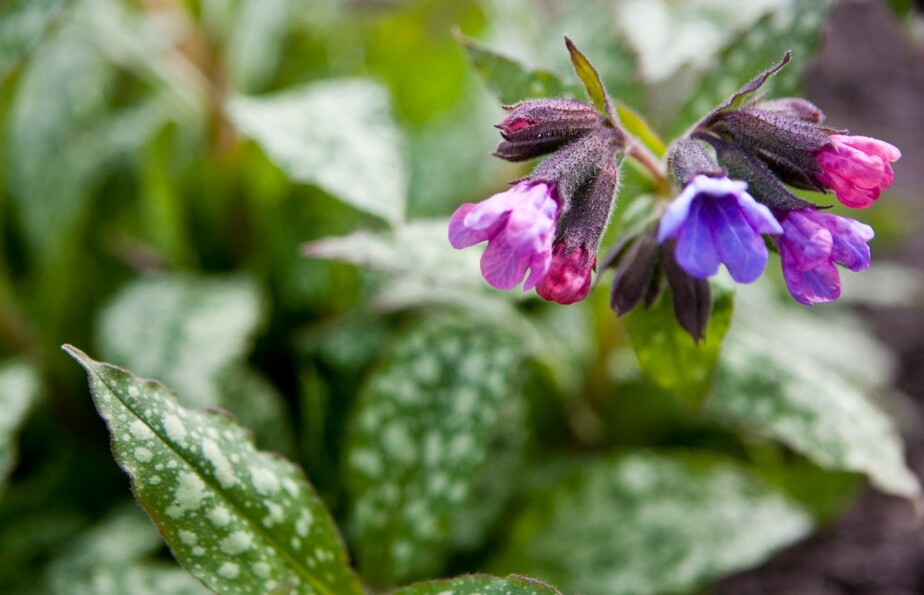
Fun fact, if you have a walnut that nothing grows under, plant lungwort! They thrive in all light conditions from full to partial shade and aren’t affected by the anti-plant chemical that black walnut trees produce.
- Height: 12-18 inches
- Range: Europe
- Climate: Zones 4-8
- Functions: Accompanied by purple flowers, the spotted semi-evergreen leaves are rough with coarse hairs. Deer and rabbits tend to avoid the plant for its texture. This ground cover is best used as a pest-deterring ornamental.
- Light requirements: Full/deep shade to partial shade or full sun.
- Soil preferences: Moist soil is ideal but tolerates drought.
Nature Hills Nursery currently offers 4 types of lungwort.
Pennsylvania sedge (Carex pensylvanica)
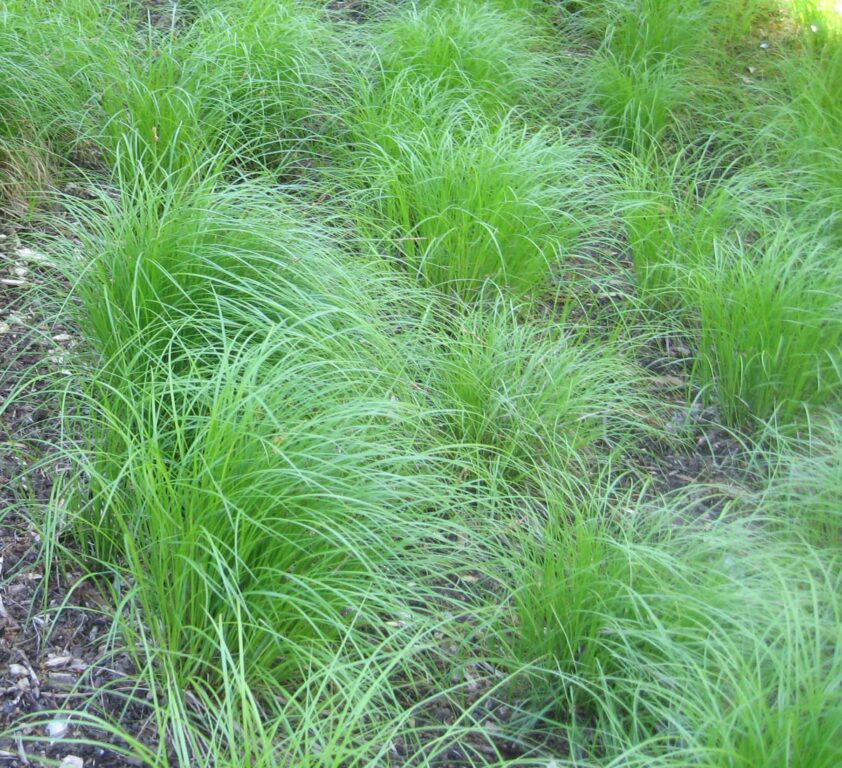
This grassy-looking evergreen native attracts wildlife—in good ways—and stabilizes the soil in fully or partially shaded areas. With a bit of mulch, you’ll be able to set and forget it after establishing this plant.
- Height: 6-12 inches
- Range: North America
- Climate: Zones 4-8
- Functions: A perfect ground cover for dry shade to prevent erosion and emptiness, or lawn replacement for heavy-shaded areas.
- Light requirements: Full/deep shade to partial shade or full sun.
- Soil preferences: Moist soil and tolerates drought.
This sedge is available here (currently at 17% off).
Dumortier’s daylily (Hemerocallis dumortieri)
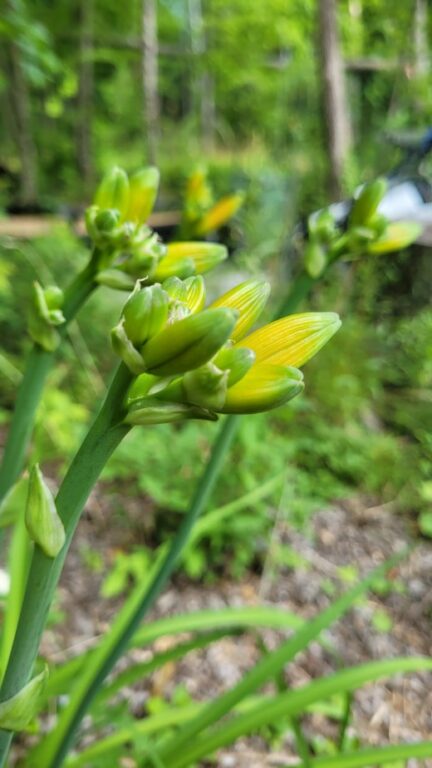
Daylilies are very easy to grow, taste delicious, and thrive even after transplanting abuse! The best part is they still flower in the shade.
- Height: 1-2 feet
- Range: Asia
- Climate: Zones 4-8
- Functions: Ornamental. Edible leaves, roots, and shoots. Ideal for adding diversity to a forest garden’s ground cover layer. Trap for slugs.
- Light requirements: Full/deep shade to partial shade.
- Soil preferences: Moist soil
Daylilies can grow quite quickly from seed if you’re looking to have a large patch, or you can transplant a plant, let it grow, and divide it into multiple after a year or so of growth.
Endless flower colors and combinations exist and can even be created. See daylilies here and here.
Related: 24 Best Edible Ground Covers for Shade
Wild blue phlox (Phlox divaricata)
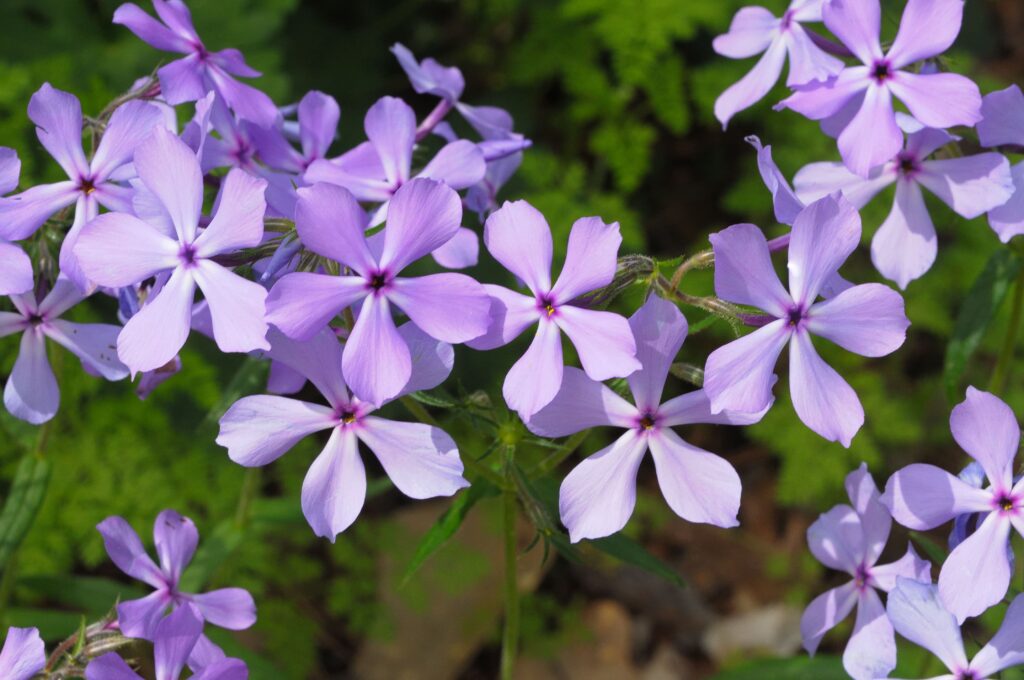
This variety of phlox thrives and flowers in both full and partial shade. It’s native and often included in food forests as a ground cover to attract wildlife and important pollinators. The foliage is considered evergreen, but I would call it semi-evergreen as it is not green during the snowy winter months!
- Height: 6-12 inches
- Range: North America
- Climate: Zones 4-9
- Functions: Best planted when needing a pollinator magnet and gorgeous ornamental ground cover.
- Light requirements: Full/deep shade to partial shade or full sun.
- Soil preferences: Moist soil and drought tolerant.
Etsy offers wild blue phlox seeds here and grown plants are offered here.
Creeping phlox (Phlox stolonifera)
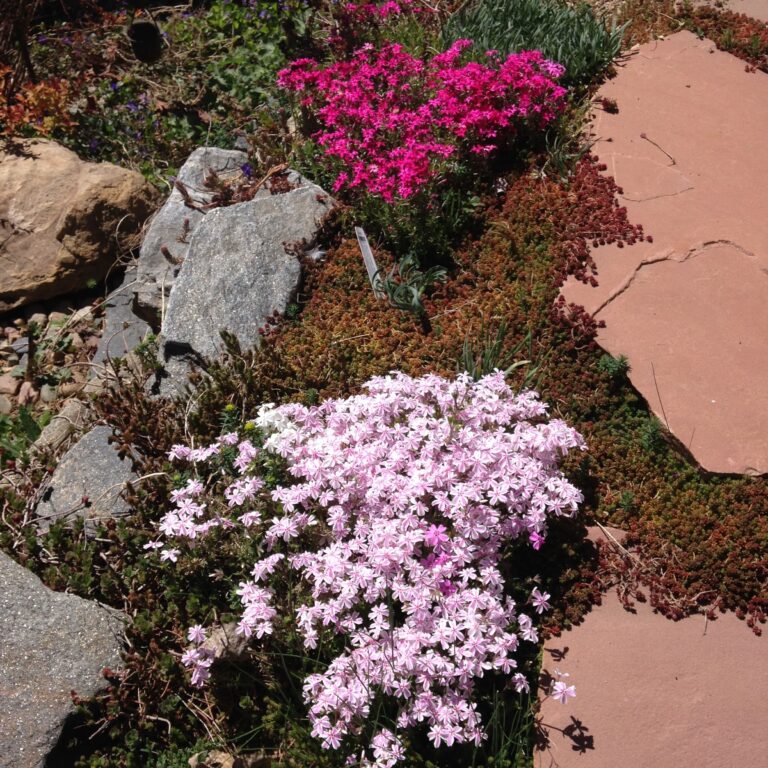
Creeping phlox is functionally similar to wild blue phlox, but is a lower-growing version. This phlox tends to spread easier and cover more ground in less time. This is a better choice for larger spaces in need of dense ground coverage.
- Height: 3-8 inches
- Range: North America
- Climate: Zones 4-9
- Functions: Best planted when needing a pollinator magnet and gorgeous ornamental ground cover.
- Light requirements: Full/deep shade to partial shade or full sun.
- Soil preferences: Moist soil and drought tolerant.
Etsy offers creeping phlox seeds here and transplants are offered here.
Related: 10 Best Flowering Ground Covers for Full Shade
Japanese Spurge (Pachysandra terminalis)
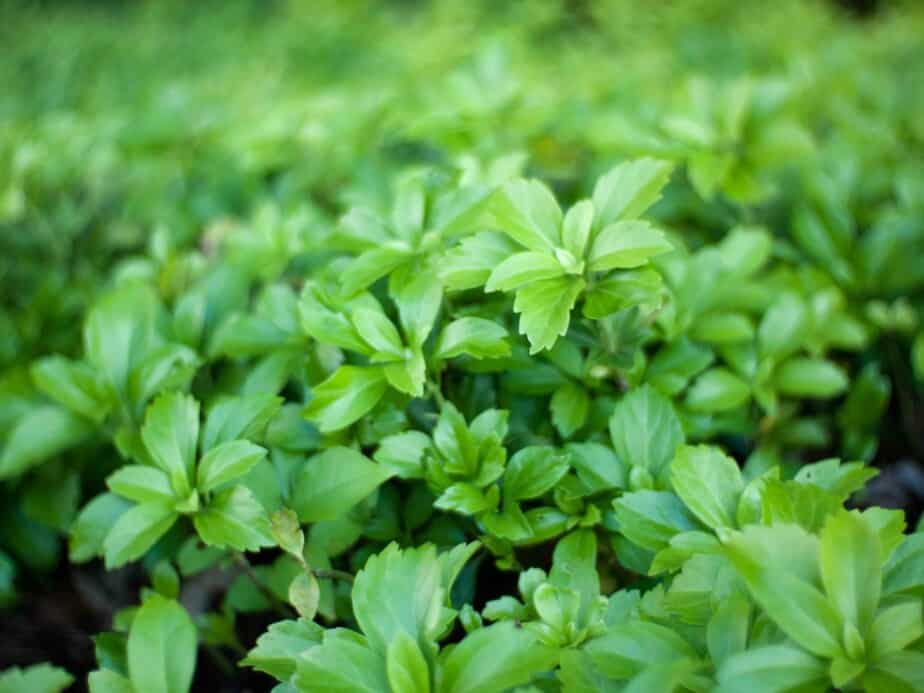
Japanese spurge offers a vibrant and eye-catching texture. It thrives in deep shade or partial shade and offers a dense bright green in darker spaces. While it grows fast, it isn’t invasive beyond the shade.
- Height: 2-8 inches
- Range: Asia
- Climate: Zones 4-8
- Functions: Best used under established shrubs or trees to control erosion, cover exposed soil, or fill gaps around rocks.
- Light requirements: Full/deep shade to partial shade.
- Soil preferences: Dry or moist soil and tolerant to drought.
From April to May, you’ll also enjoy the scent of inconspicuous flowers.
Japanese spurge seeds and cuttings are available here and plants are available here.
Chamomile (Chamaemelum nobile)
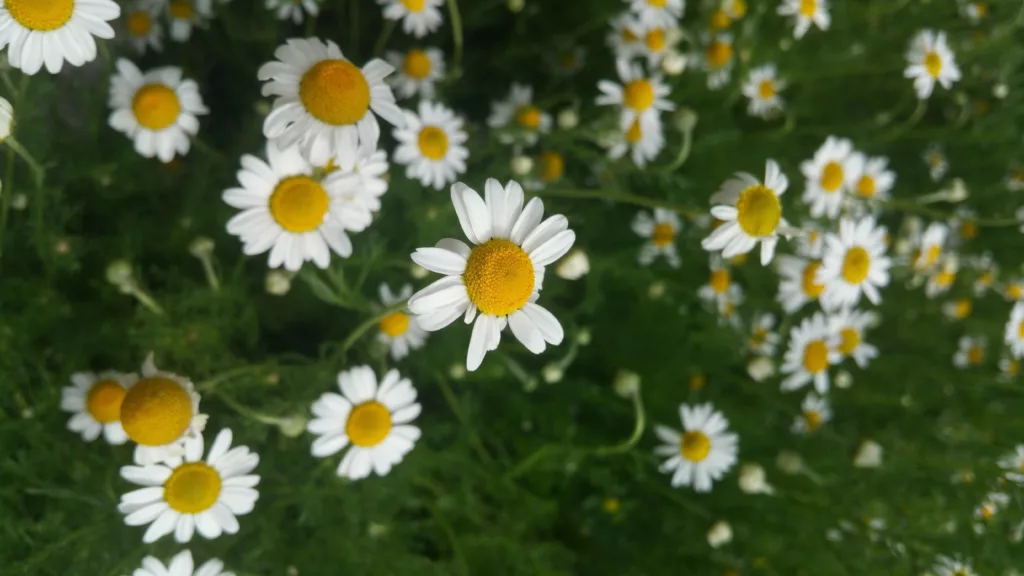
Chamomile produces persistent flowers from June to July and is often used as a calming herbal tea. We notice that it thrives best in partial shade rather than full sun or full shade.
- Height: 3-12 inches
- Range: Europe
- Climate: Zones 4-9
- Functions: Ornamental and edible. Sweet-smelling flowers are used for tea and pretty daisy-like flowers.
- Light requirements: Partial shade.
- Soil preferences: Moist soil and tolerates droughts.
Chamomile grows very easily and quickly from seed. Perennial or annual chamomile is available here.
Lily Turf (Liriope spicata)
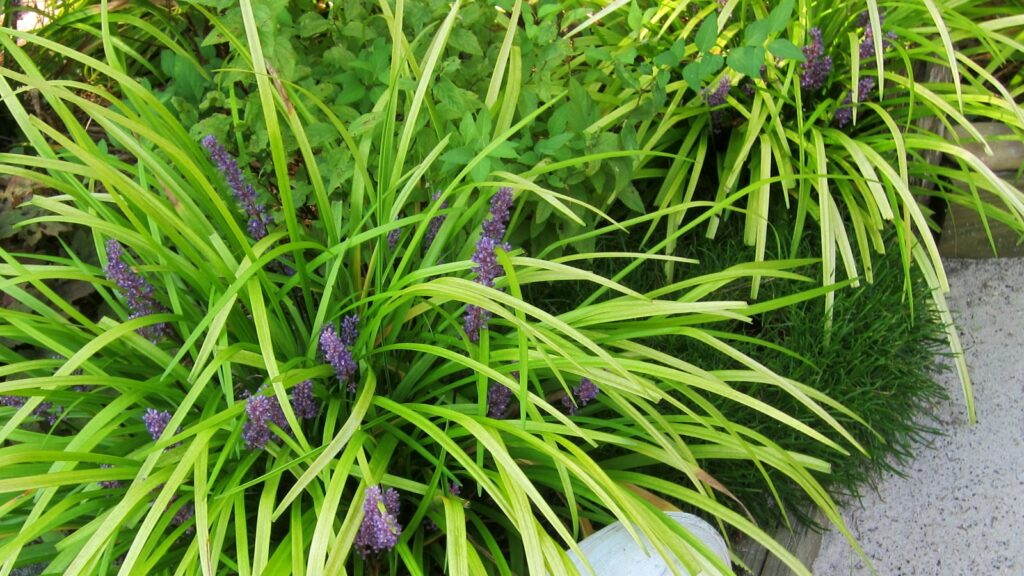
Lily turf is a popular semi-evergreen used as a ground cover in various types of partially shaded areas. It’s suitable for rocky soils, hillsides, seashores, or woodland gardens. It isn’t, however, native to North America and may be considered invasive. Check before choosing this as a ground cover!
- Height: 8-16 inches
- Range: Asia
- Climate: Zones 4-10
- Functions: Ornamental. Edible leaves, roots, and shoots. Ideal for adding diversity to a forest garden’s ground cover layer. Trap for slugs.
- Light requirements: Partial shade.
- Soil preferences: Moist soil and tolerates droughts.
Lilyturf plants are available here and seeds are here.
Wood Violet (Viola odorata)
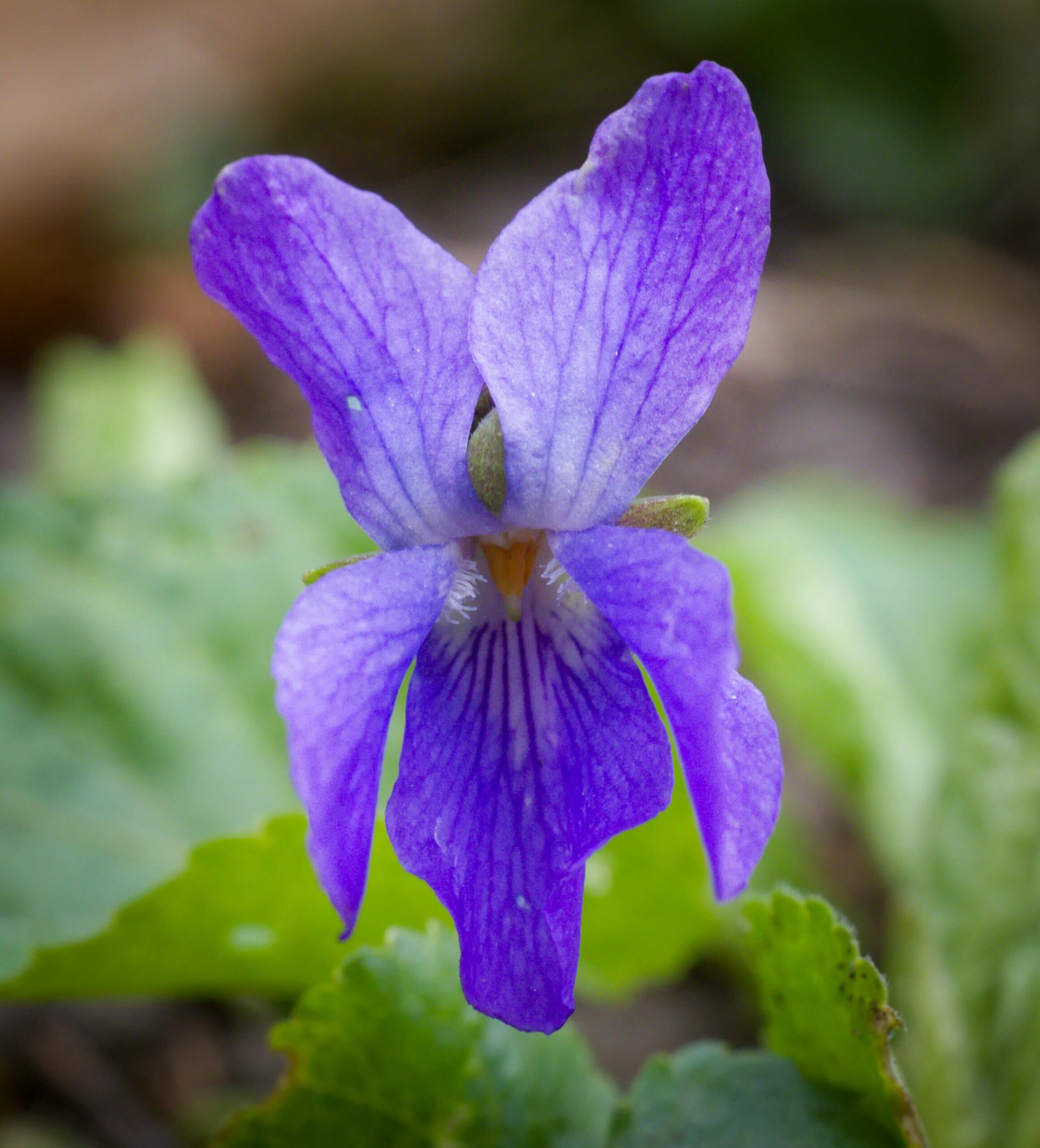
Violets, in general, are popular shade-loving covers in all sorts of gardens and food forests as they are edible, considered dynamic accumulators, and are evergreen.
The sweet scent of the ‘odorata’ violet is also useful for making perfumes or as a fresh salad topping.
- Height: 6-10 inches
- Range: Europe, Africa, and Asia
- Climate: Zones 4-9
- Functions: Ornamental and edible ground cover for borders, rocky gardens, food forests, woodland gardens, and more.
- Light requirements: Full or partial shade.
- Soil preferences: Moist soil
This specific variety of violet is available from seed here. They are relatively easy to establish with weeding in year one.
Drumstick Primula (Primula denticulata)
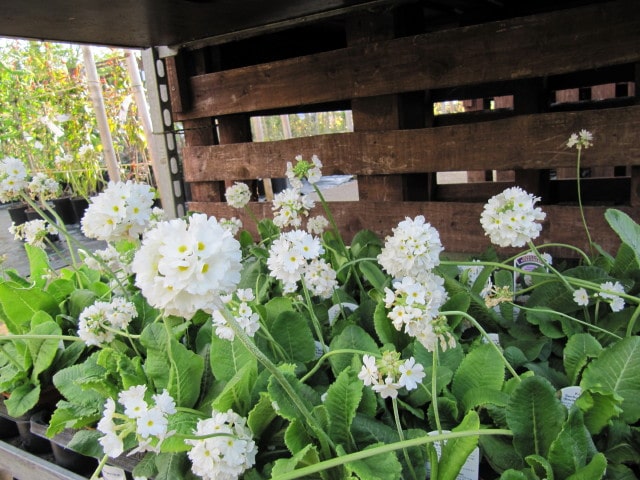
Drumstick primulas are another popular choice among ornamental gardens and it so happens that they thrive in partial shade. For anyone with moist or wet shade with hard soil, drumstick primulas are perfect. Avoid planting this ground cover in dry or loose soils.
- Height: 8-12 inches
- Range: Asia
- Climate: Zones 4-8
- Functions: Ornamental and edible for rock gardens, wet or soggy areas, flower gardens, wild gardens, and north-facing situations.
- Light requirements: Full/deep shade to partial shade.
- Soil preferences: Moist or wet soil and suitable for clay or heavy clay.
The “drumstick” part of the name highlights the flowers of this plant. You can get red, purple, pink, lavender, yellow, white, multicolored, blue, and more! See selection.
Alum Root (Heuchera cylindrica)
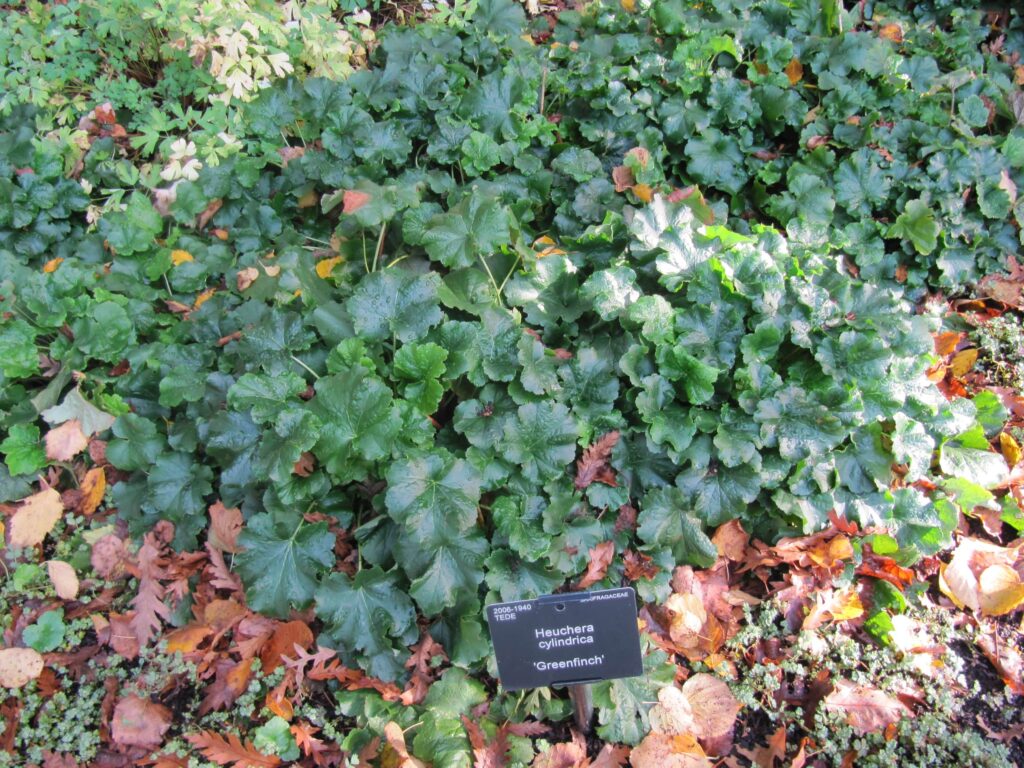
Alum root, otherwise known as ‘coral bells,’ grows best in damp areas with partial shade. Low-growing foliage provides dense and semi-evergreen ground coverage. The leaves are also edible!
- Height: 10 inches (leaves) with flowers spiking up to 3 feet.
- Range: North America
- Climate: Zones 4-8
- Functions: Used primarily as an ornamental ground cover in shaded native, woodland, or rock gardens.
- Light requirements: Partial shade
- Soil preferences: Moist soil
The foliage of this ground cover comes in stunning shades and patterns from deep dark reds, purples, peach, and bright lime, to tri-coloring, basic greens, and more.
See seed selection or plant selection.
European Wild Ginger (Asarum europaeum)
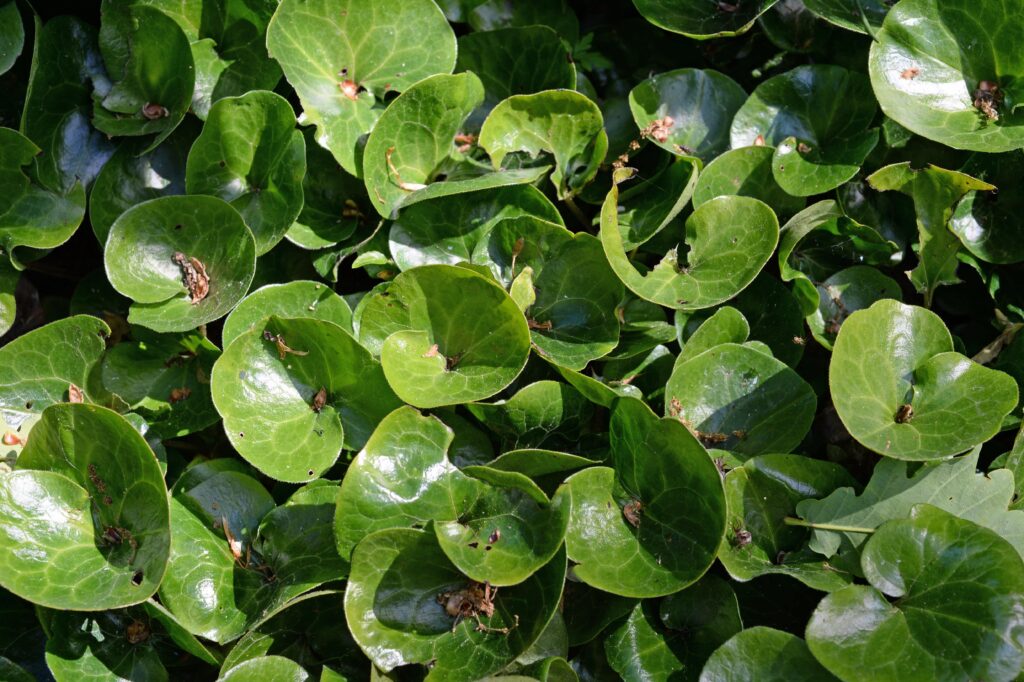
Various wild gingers are available to choose from, this European variety makes the list because it is specifically hardy to zone 4. Others, such as Canadian ginger (Asarum canadense) are hardy to zone 3. You’ll find those and their ‘specs’ here.
European ginger offers gorgeous glossy round leaves and a wonderful scent. This cute low-grower thrives in full or deep shade (like any other wild ginger) and is also accepting of bright or partially shaded areas.
- Height: 4 inches
- Range: Europe and Asia
- Climate: Zones 4-8
- Functions: Ornamental and fragrant. Could be used medicinally. Often ground in masses for ground cover, along edges, or rock gardens.
- Light requirements: Full/deep shade to partial shade.
- Soil preferences: Moist soil
This specific ginger may be harder to find, but any wild ginger whether hardy to zone 3 or 4 will grow well for you. See what’s available.
Creeping Juniper (Juniperus horizontalis)
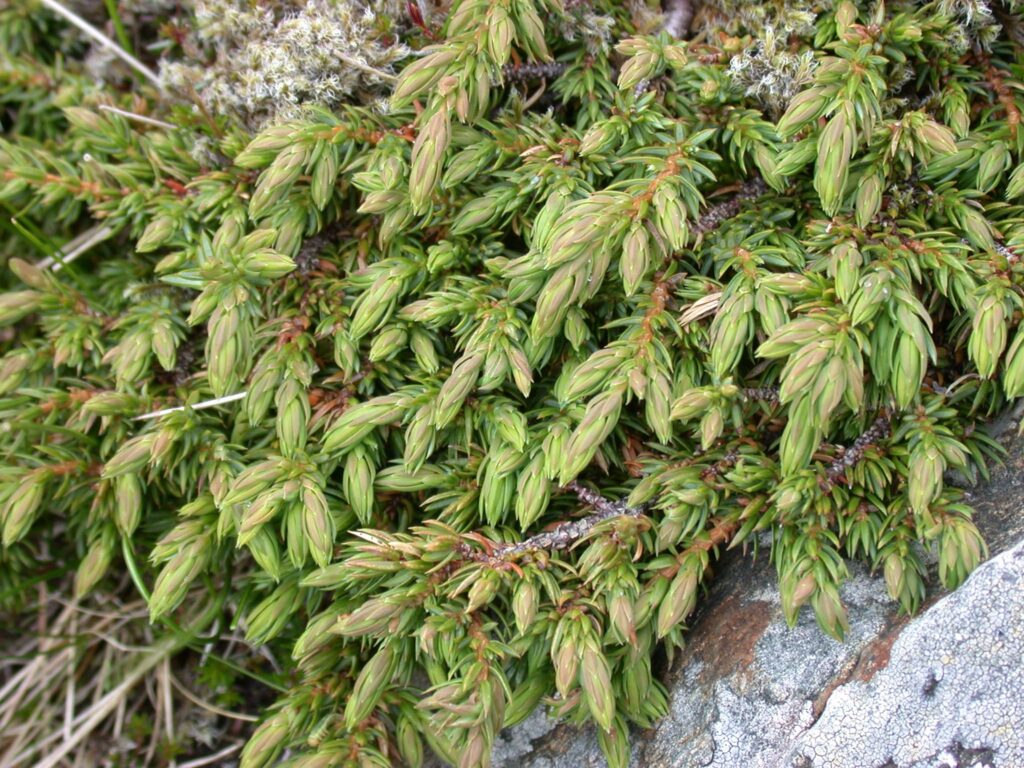
Creeping juniper is a lower-growing evergreen ground cover often used to deter deer or keep a landscape green year-round. Unlike juniper trees, the creeping juniper shrubs can thrive in partial shade.
- Height: 2 feet
- Range: North America
- Climate: Zones 4-9
- Functions: With the definite correct species, the berries and green tips of juniper are edible as beverage ingredients. Juniper is also chosen for erosion control, cascading gardens, native gardens, mass coverage, food forest borders or windbreaks, rock gardens, or along seashores as they tolerate maritime areas.
- Light requirements: Partial shade or full sun.
- Soil preferences: Moist or dry soil with good drainage and tolerates drought.
Junipers are highly versatile and useful ground covers but are a bit taller than what everyone may consider when searching for the ideal ground cover.
If creeping juniper sounds like a good choice for you, plenty of options are available. Lime green or blue-coloring with various foliage patterns.
Related: 23 Evergreen Ground Covers for Shade
Creeping barberry (Mahonia repens)
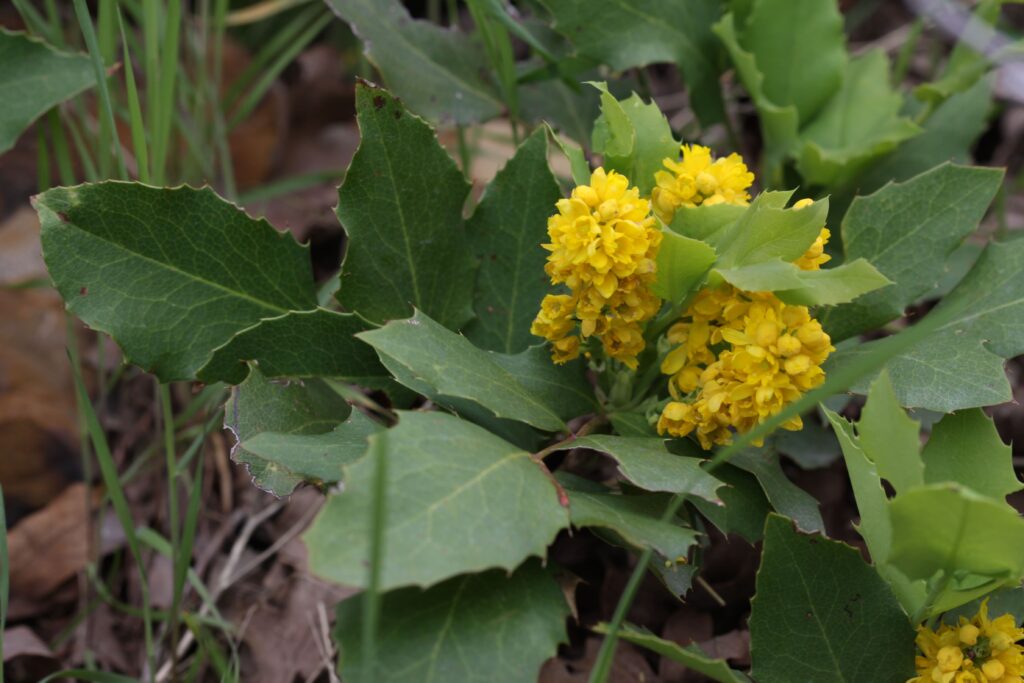
Otherwise known as ‘creeping Oregon grape,’ this fragrant ground cover thrives in partial shade and is used to stabilize soil on steep slopes. Partial shade protects this plant from scorching heat and sun in summer, making it a perfect position.
Not only is it native and highly useful ground cover for the landscape, but also for us as it has medicinal and edible purposes.
- Height: 1-3 feet
- Range: Western North America
- Climate: Zones 4-8
- Functions: Soil stabilizer for sloping landscapes, fragrance, making dyes, and more.
- Light requirements: Partial shade
- Soil preferences: Moist or dry soil with good drainage. Suitable and tolerant to heavy clay.
Grow from seed here.
Or see plant selection for transplanting.
Bearberry (Arctostaphylos uva-ursi)

Bearberry plants are popular in food forest gardens as they thrive in all levels of sun from full to partial, or no shade. These highly functional plants offer strength and adaptability to be pioneers, medicinal properties, edible fruit and leaves, and gorgeous coloring.
- Height: 6-12 inches.
- Range: North America, Britain, Northern Europe, Northern Asia.
- Climate: Zones 4-8
- Functions: Evergreen ground coverage, edible ground cover, preventing erosion,
- Light requirements: All light levels from full shade to sun.
- Soil preferences: Moist soil
You’ll find seeds, tinctures, and dried versions of this plant for sale to consume medicinally or grow. Find seeds and the value of this herb!
You can also buy this species as a plant at Nature Hills Nursery—they call it “Massachusetts Kinnikinnick”
Partridge Berry (Mitchella repens)
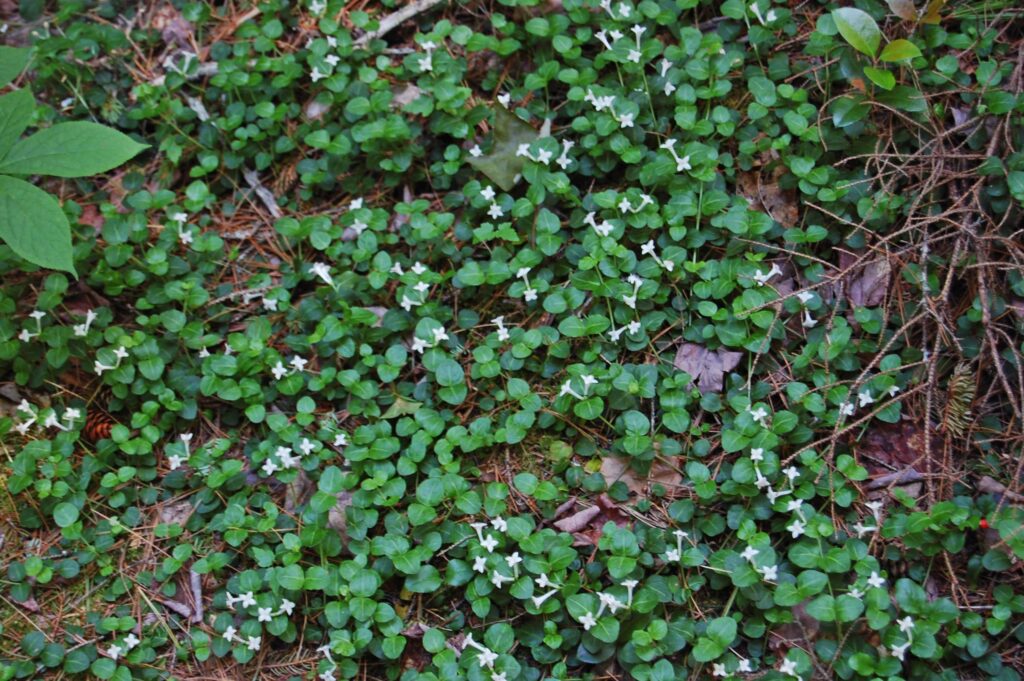
Partridgeberry is similar to bearberry in many ways but their degree of shade tolerance is a bit different. Partridge berries prefer at least partial shade. The foliage between them has clear differences but both produce little red edible berries.
Partiridgeberries are also popular in food forests for fulfilling the ground cover layer.
- Height: 2 inches
- Range: North America
- Climate: Zones 4-9
- Functions: Fragrant ground cover in rock gardens, native gardens, or woodland gardens.
- Light requirements: Partial shade.
- Soil preferences: Moist soil
Seeds are available here.
Rock Cress (Arabis caucasica)
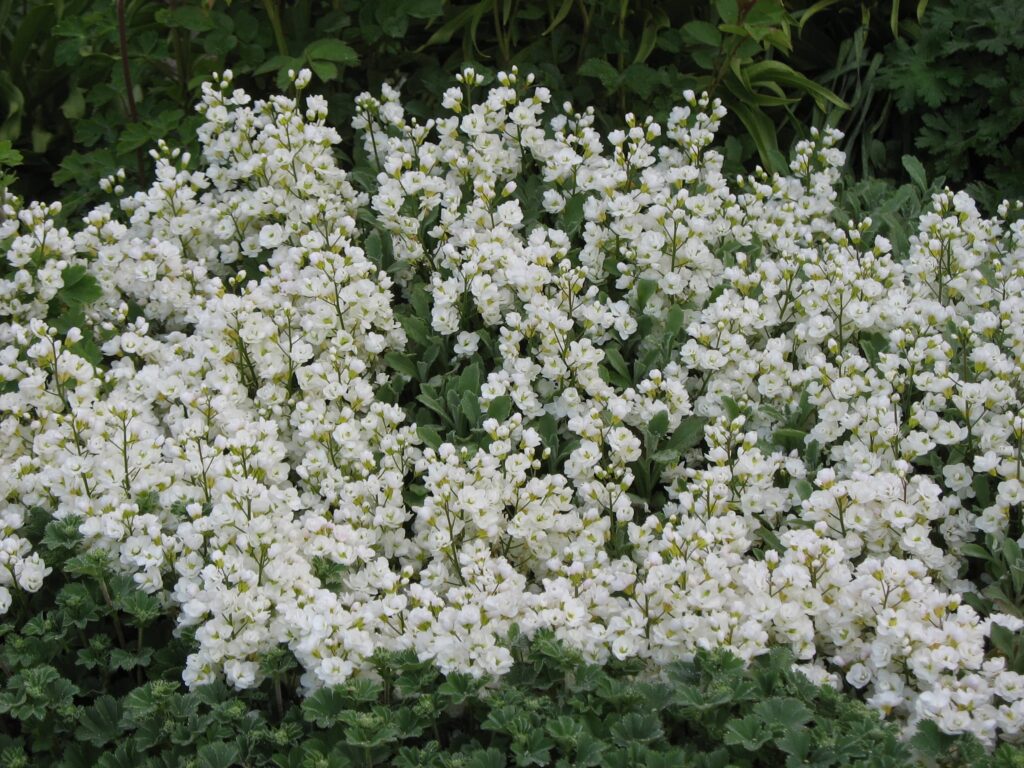
If you have poor soil and partial shade, go with rockcress! The leaves are edible, evergreen, and carpet-forming.
- Height: 4-9 inches
- Range: Europe
- Climate: Zones 4-9
- Functions: Often used as an ornamental plant in poor soil situations in rock gardens, along crumbly borders, cascading down walls, or in pollinator gardens. The plentiful flowers attract bees.
- Light requirements: Partial shade
- Soil preferences: Moist or dry soil and tolerates drought. Grows best in poor soil rather than rich ones.
When choosing between all the available colors, try not to get carried away!
Related: 15 Easiest Ground Covers that Thrive in Shade
Common rue (Ruta graveolens)
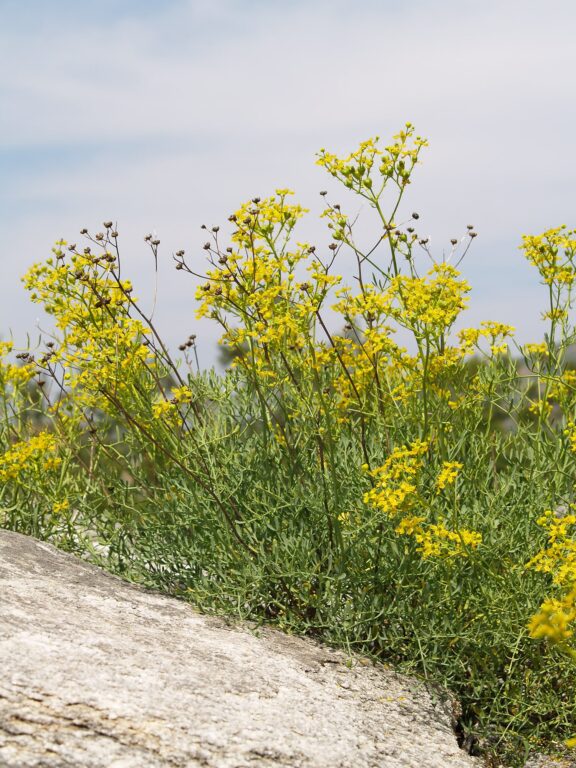
Rue is often used a companion plant—for garlic, as an example. But unlike garlic, it thrives in partial shade and grows in poor soils.
- Height: 2-3 feet
- Range: Europe
- Climate: Zones 4-10
- Functions: Used a scent confuser to prevent pest damage in food forests and vegetable gardens. Also grows easily in rock gardens.
- Light requirements: Partial shade.
- Soil preferences: Moist or dry soil and tolerates drought.
Seeds are available here.
Privet honeysuckle (Lonicera pileata)
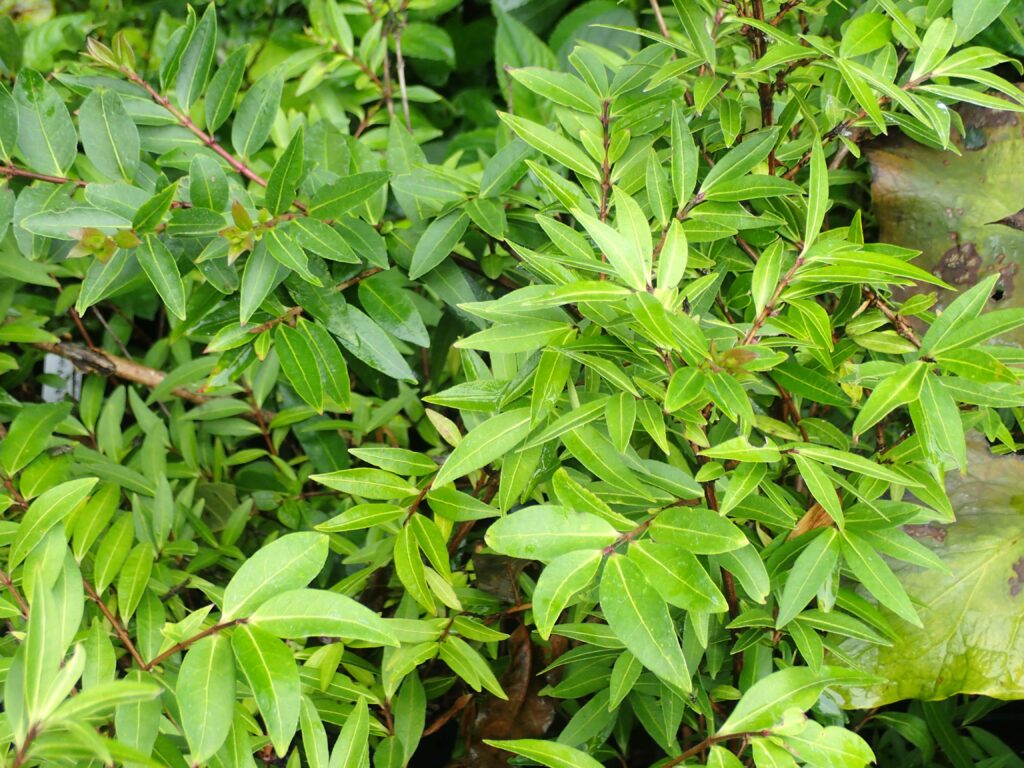
If you’re in a maritime area and looking for an evergreen ground cover, this privet honeysuckle will thrive in any lighting situation from no shade to full shade.
- Height: 2-3 feet
- Range: Asia
- Climate: Zones 4-8
- Functions: An easy ground cover for salty positions or any other regular setting with dry shade or moist soil. Also offers deer resistance and attractive slender foliage.
- Light requirements: Full/deep shade to partial shade.
- Soil preferences: Moist or dry soil
These honeysuckle ground covers are available as full plants or as seeds.
Bigroot Geranium (Geranium macrorrhizum)
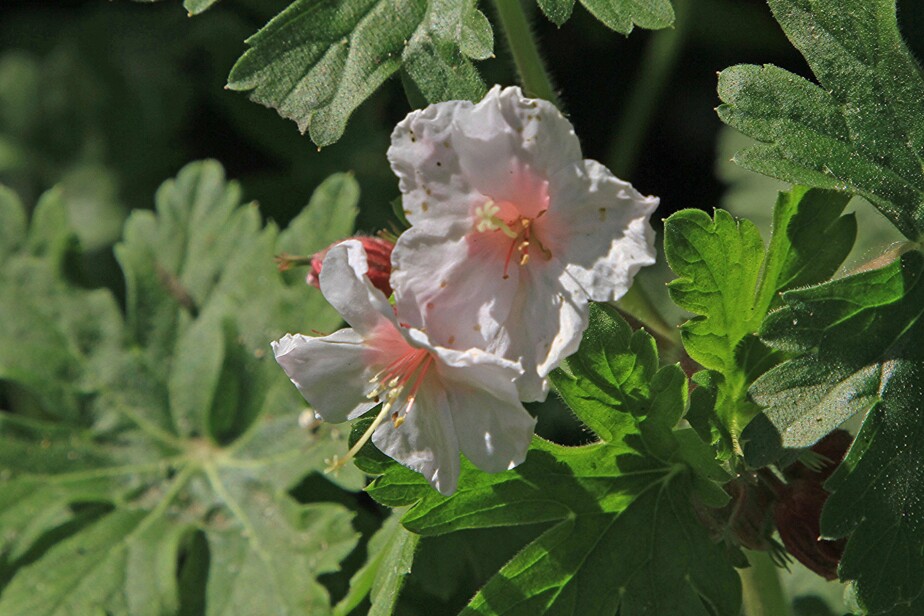
This article was originally published on foodforestliving.com. If it is now published on any other site, it was done without permission from the copyright owner.
Most geraniums are full sun lovers but this variety grows well in deep shade or partial shade. Bigroot geranium grows fast, overtakes weeds, and forms a dense ground cover.
- Height: 3 feet
- Range: Europe
- Climate: Zones 4-8
- Functions: Ornamental flowers from June to August. Used as a scent confuser for pest prevention. The strong fragrance is used to make oils and potpourri. Deer resistance.
- Light requirements: Full/deep shade to partial shade.
- Soil preferences: Moist soil dry soil and drought tolerant.
When shopping for seeds or plants be sure you’re selecting the correct geranium that has shade tolerance.
Hydrangea (Hydrangea anomala)
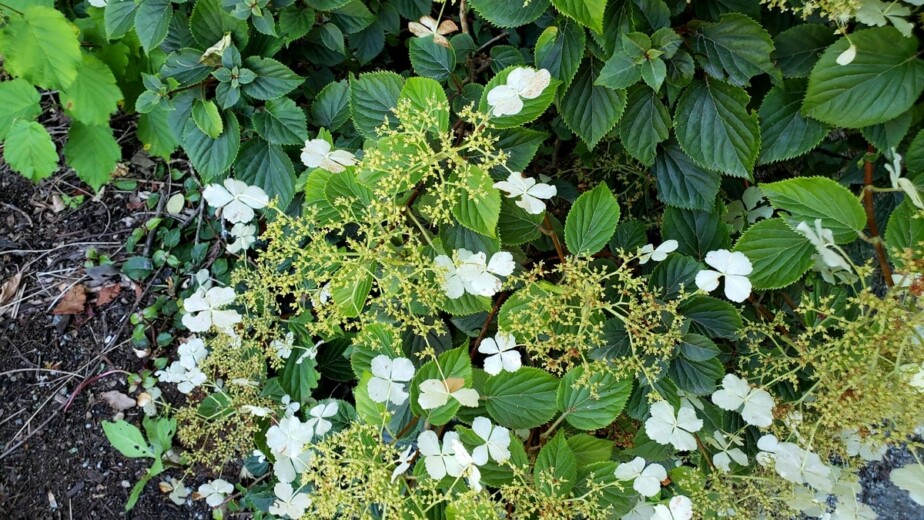
This hydrangea (anomala) is a fast-growing deciduous perennial that spreads of climbs up to 40 feet in length. It grows in full shade, partial shade, or with no shade—as long as its roots stay moist.
While native to Asia, hydrangeas are grown all over because it is favorably ornamental.
- Height: 3-4 inches
- Range: Asia
- Climate: Zones 4-8
- Functions: Ornamental—the flower color is largely affected by soil acidity and is grown for show. Leaves and sap are sweet and edible.
- Light requirements: Full/deep shade to partial shade.
- Soil preferences: Well-drained moist soils.
Find seeds here. It’s also known as “climbing hydrangea” and is available as plant starts in containers.
Chocolate vine (Akebia quinata)

I’m hesitant to put this on the list, but am only doing so to offer you alternatives! I’ve seen chocolate vine recommended in other articles.
This vine, however, has become invasive in the Eastern United States. Full shade is a great way to control the vigor of this vine, but usually, shade is where it competes best because it tolerates it better than other species.
So if you’re in an area where chocolate vine poses an ecological threat, consider these alternatives:
- Virginia creeper (pathenocissus quinquefolia) grows in the shade, or sun, and is very beneficial to wildlife.
- Trumpet Honeysuckle (Lonicera sempervirens) prefers full sun but tolerates partial shade
- Crossvine (Bignonia capreolata) prefers full sun but tolerates partial shade.
See more alternatives: 16 Fast-Growing Ground Covers to Make Shade Lush
Bishop’s Hat (Epimedium spp.)
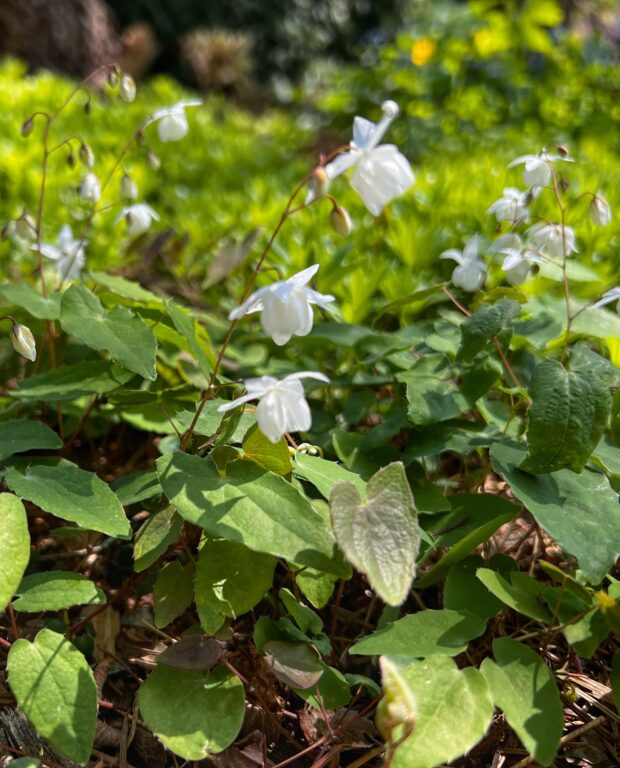
A horizontally spreading ground cover for partial shade with delicate, heart-shaped leaves and unique flowers. Adaptable to light sand or heavy clay soils.
- Height: 12 inches
- Range: Asia
- Climate: Zones 4-8
- Functions: Ornamental ground cover. Flowers from May to June.
- Light requirements: Partial shade.
- Soil preferences: Moist or dry soil
Otherwise known as “barrenwort.” See available varieties.
Periwinkle (Vinca minor)
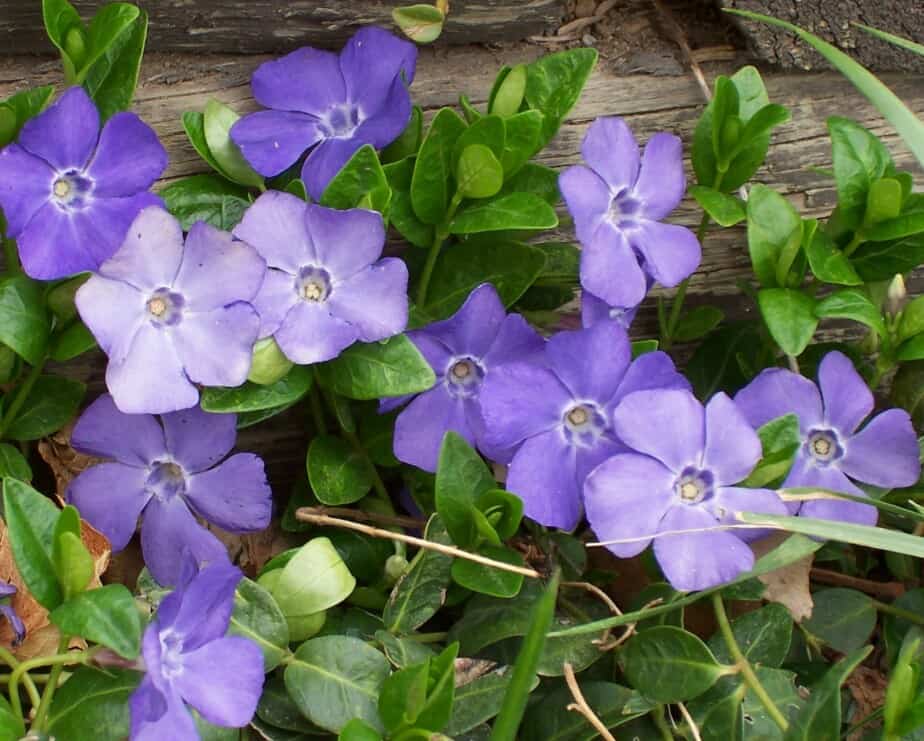
Also called Periwinkle, this is a semi-evergreen ground cover with blue-purple flowers.
Although popular, it may be considered invasive in your area.
- Height: 6 inches
- Range: Europe and Asia
- Climate: Zones 4-9
- Functions: Ornamental flowering from April to May with season-round attractive foliage. Erosion controlling ground cover for rock gardens, food forests, steep slopes, shady areas, and borders.
- Light requirements: Full/deep shade to partial shade.
- Soil preferences: Moist or dry soil and tolerates drought. Suitable for various soil types including heavy clay.
Plants are available here and seeds are here. Ordering seeds offers pink and other flower colors, but a container allows for quicker establishment.
Up Next: 12 Shade-loving Ground Covers for Droughts & Low Effort
Recent Posts
There’s no shortage of full-sun ground covers for zone 4 climates! Each plant in this list can withstand the frigid temperatures and also enjoy the hot sun in summer. Full sun means that a plant...
There's no shortage of full sun ground covers, not even in zone 3! Zone 3 climates offer hot but short-lived summers and very cold winters. So each plant in this list can withstand the frigid...
